January 30, 2024
Gaurav Jain looks at trends in India’s lentil production and the influence of acreage and MSP in the context of the possibility of record production in 2024.

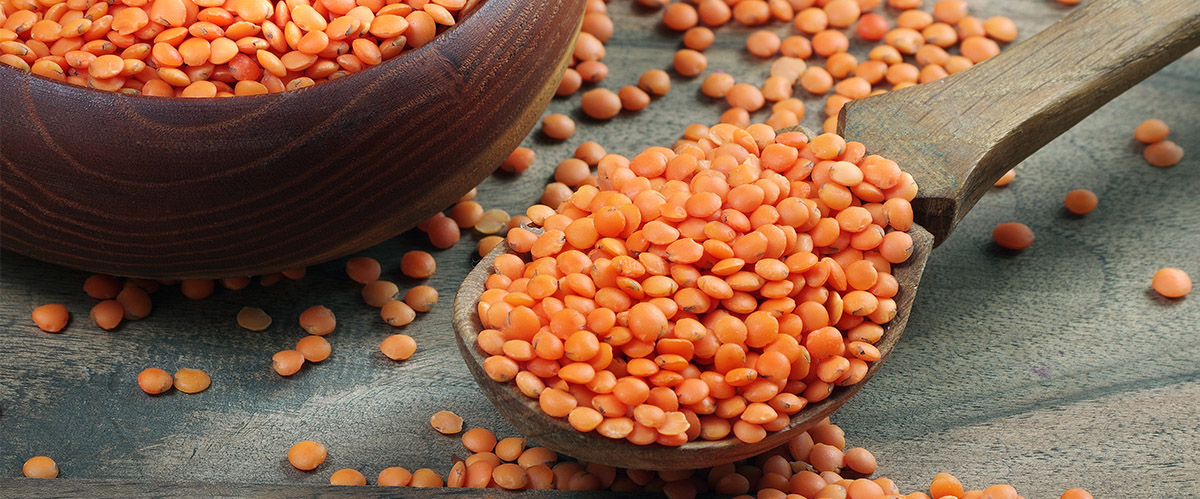
India has traditionally been among the world's top three lentil producers, yet its enormous demand makes it nonetheless dependent upon imports. Consequently, India has been ranked as the top importer of lentils for many years.
Government incentives over the past few years have translated into increased acreage for lentils in the country. As a result, production for 2024 could reach record volumes, surpassing the previous record set in 2018.
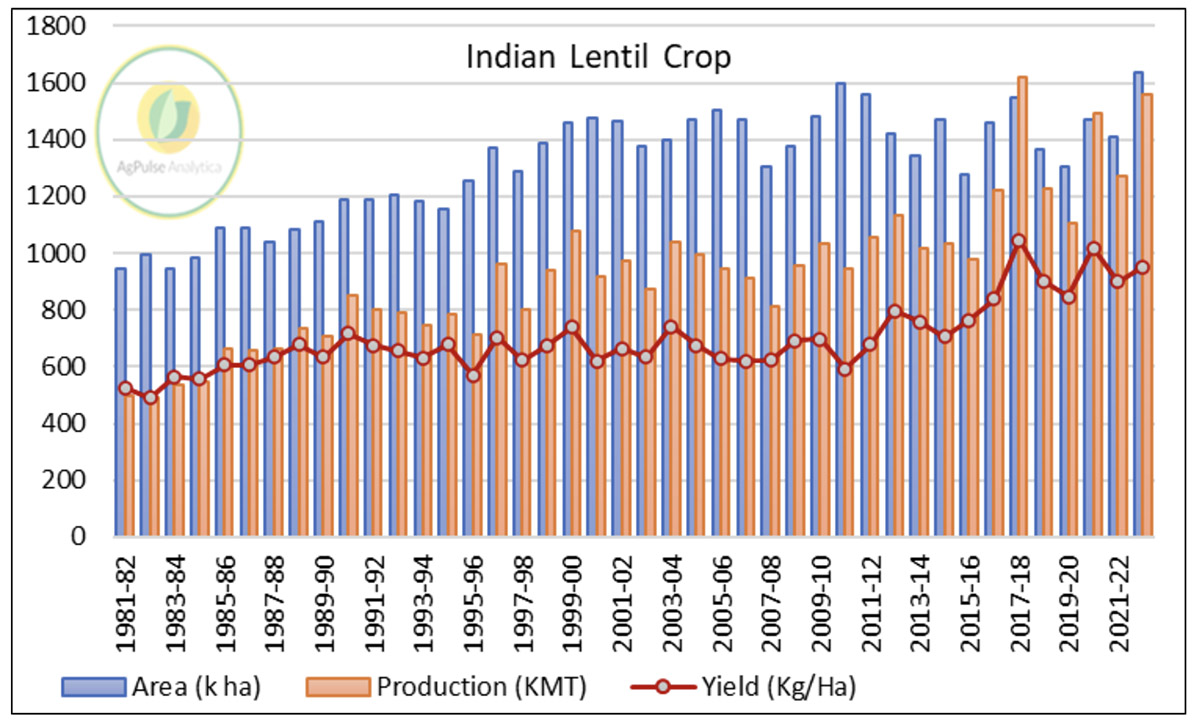
Between 2000 and 2015, Indian lentil production was stagnant at around 1 million metric tonnes. However, as of MY 2016/17, a significant improvement in yield led the country to reap a crop of over 1.2 MMT annually, with an average of 1.36 MMT. The current production record was made in MY 2017/18, when Indian farmers harvested 1.622 MMT of lentils. Furthermore, last year’s sharp acreage increase boosted production to the second largest production on record, at 1.559 MMT.
Government support through increases in the MSP since the start of the last decade has been impressive for lentils. Among the major Rabi crops, lentils have seen the second-largest production jump since MY 2011/12, and an increase in government procurement in the past few years has instilled confidence among farmers to seed more.
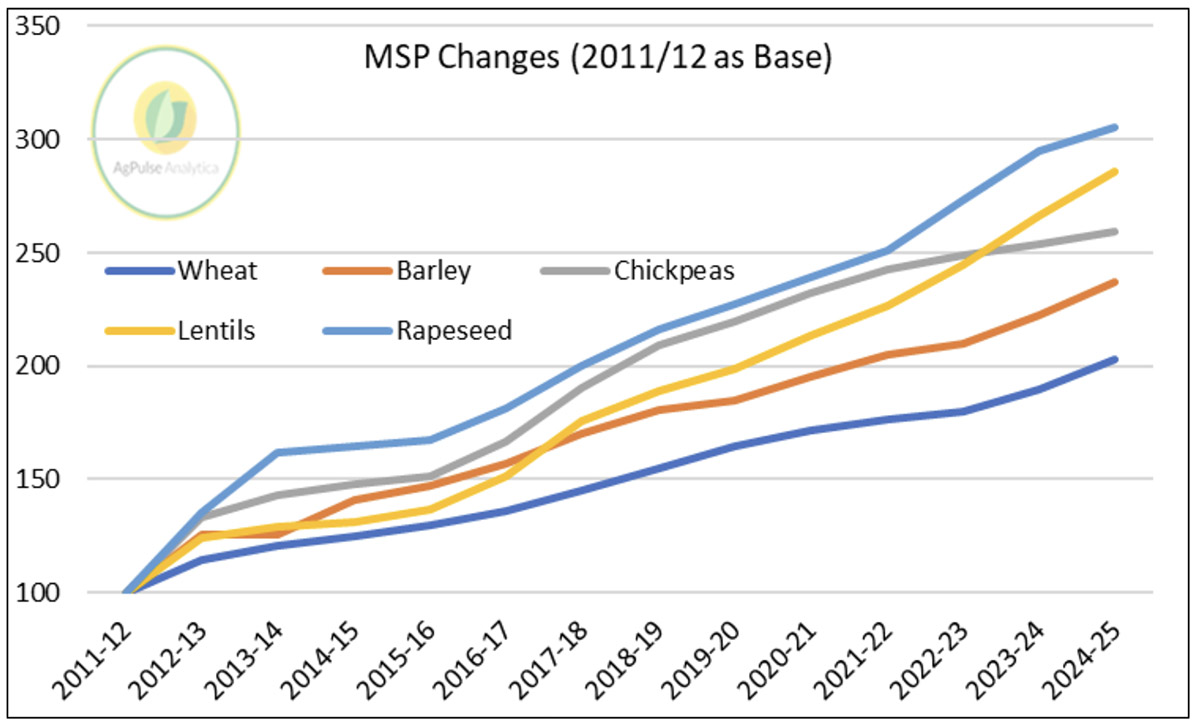
As of the latest update, lentils have been seeded on 1.95 million hectares - an increase of 5.7% from last year. While acreage for most Rabi pulses decreased this year, lentils were an exception; attractive remuneration amid strong domestic demand pushed the seeded area up this year.
Although some weather risks lie ahead, ample soil moisture and favorable conditions during the early phases of growth in the lentil-producing areas of Madhya Pradesh and Uttar Pradesh have been helpful. At AgPulse Analytica, we expect an above-average yield for the season, which would make the 2024 crop a record.
The latest run of our yield model puts these scenarios:
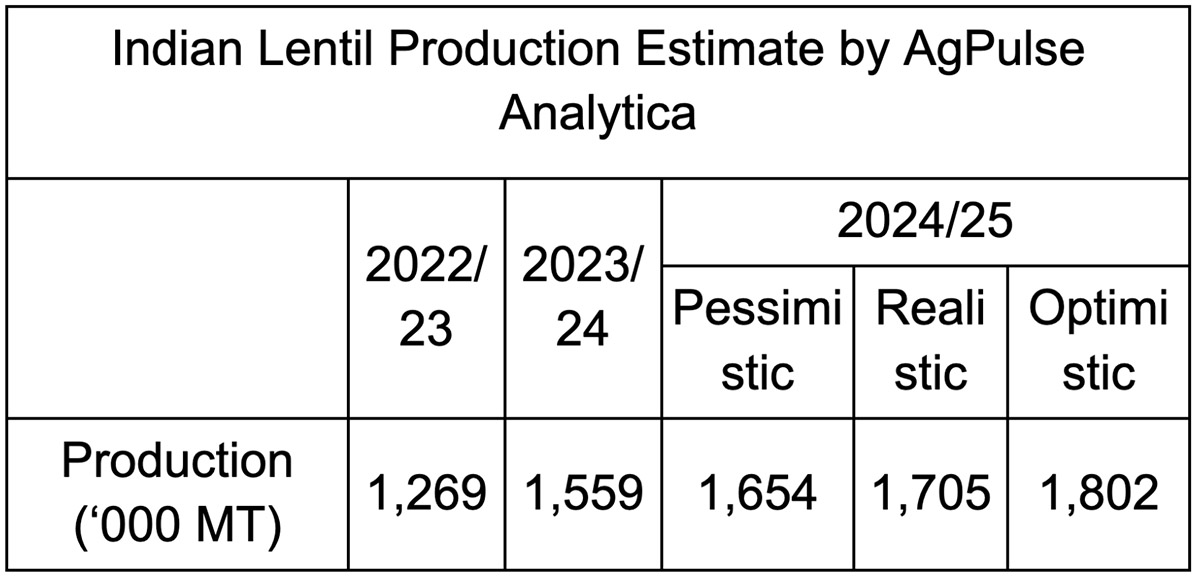
Domestic lentil consumption is on the rise, with a wide spread with pigeon peas. Despite strong production and robust domestic stocks, Indian lentil import demand will continue to remain strong. However, reduced global supply this year may mean imports are restricted to 1.25 MMT.
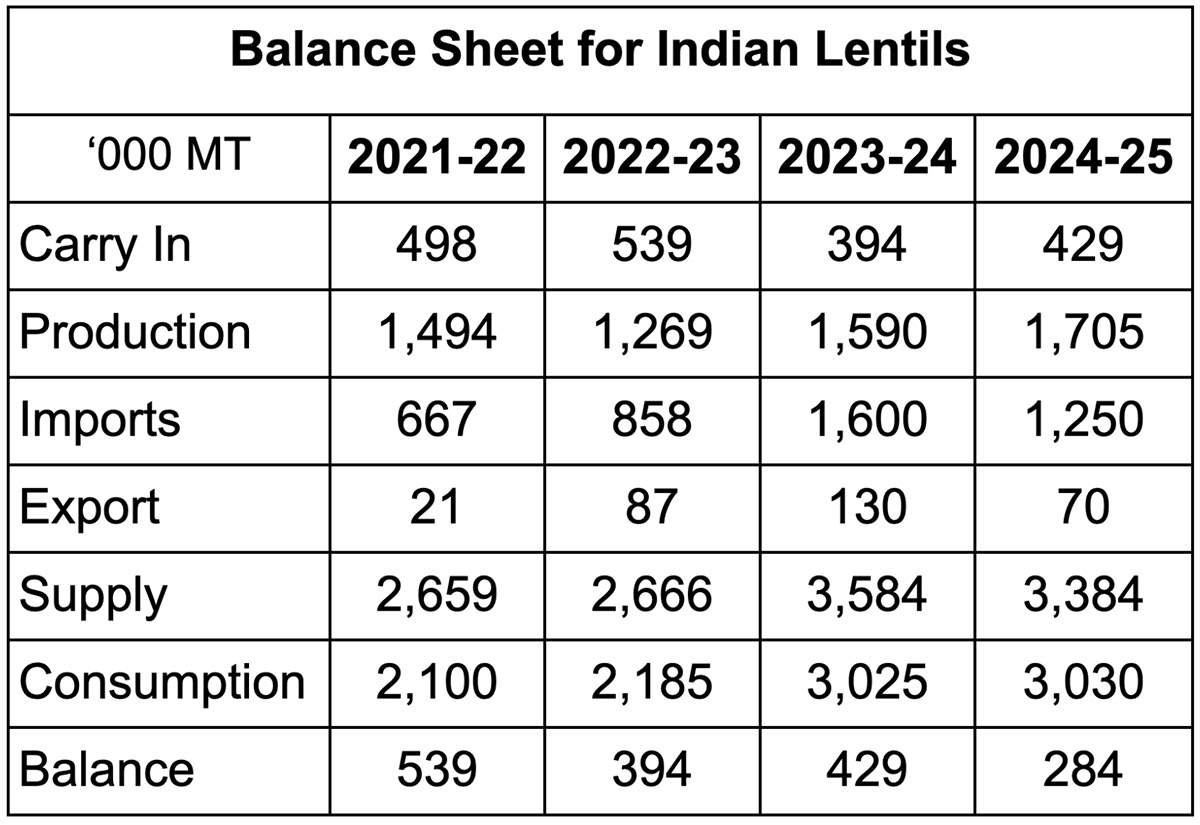
Disclaimer: The opinions or views expressed in this publication are those of the authors or quoted persons. They do not purport to reflect the opinions or views of the Global Pulse Confederation or its members.